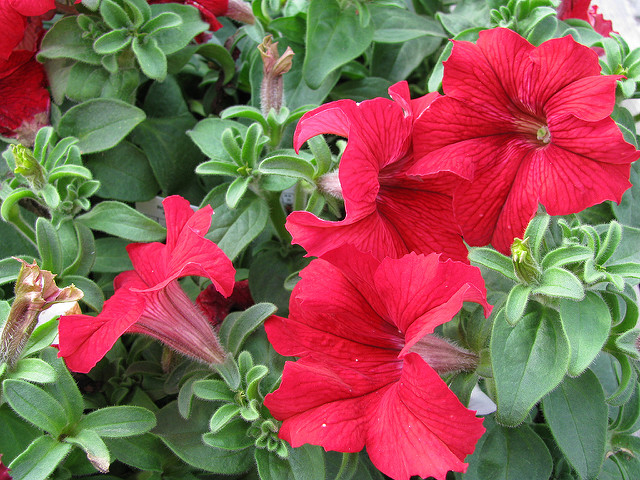 Plant Biology
Plant Biology
The fragrance of plants: how their perfume pervades the air
It’s spring and the smell of flowers spreads through the air. What we perceive as “smell” are chemical compounds also called “volatiles” which are characteristic of each and every flower. But how do plants release their pleasant fragrances so that pollinators (and us) may perceive them?

One of the most seemingly boring aspects of plants is perhaps the most exciting. Plants are sessile organisms, which means that they do not move. In order to respond to environmental stresses and to interact with other organisms, plants instead rely on a chemical language.
Volatiles, small compounds that are responsible for the characteristic smells of plants, are one of the key players in plant communication. For thousands of years humans have collected fragrant plants to produce scented practical products, including perfumes, flavor enhancers, and insect repellents. But before that, plants evolved to synthesize and release volatiles for attracting pollinators, deterring herbivores, and "talking" with neighboring plants. Volatiles also help protect plants from high light, temperature, and oxidative stress. Researchers have been working over the last two decades to understand how volatiles are made by plants, but until now the mechanisms responsible for deploying volatiles into the air have not been as well studied.
It has been presumed that to reach the atmosphere volatiles freely diffuse across each of the plant cell barriers: the plasma membrane, the cell wall, and the cuticle. While very small volatiles may diffuse out of cells, most others cannot. Knowing the chemical properties of other volatiles and the various barriers of the plant cell, we recently evaluated the cellular concentrations needed to sustain observed volatile emission rates by diffusion alone. These calculations revealed that the levels of accumulated volatiles needed to drive the diffusion process would be toxic to plant cells. This led us to hypothesize that plants must have evolved biological mechanisms to mediate volatile emission. To test this, we teamed up with a group of international collaborators and turned to Petunia hybrida, the flowers of which produce and emit high levels of volatile compounds at night in order to attract their hawkmoth pollinators. If plant cells actively control the release of volatiles, they reasoned that the process would involve transporters. Transporters are proteins that sit in membranes and pump molecules from one side to the other.
To identify potential candidate volatile transporter genes, we examined genetic changes in petunia flowers at two key points in flower development: the bud stage and two days after flower opening. These respective points correspond to the time in flower development when volatile emission is the lowest and highest. We found that the levels of a particular transporter (called ATP-binding cassette, or simply ABC) were 100-fold higher two days after flower opening compared to the bud stage.
We then genetically engineered Petunia hybrida plants with reduced levels of the candidate ABC transporter. Compared to the "normal" petunia, the engineered petunia flowers emitted half the levels of volatiles. Interestingly, the engineered petunia flowers also accumulated volatiles inside the cells leading to toxic effects on cellular membranes and a slight reduction in flower size and weight. We also introduced the ABC transporter into tobacco cells; only when it was present could tobacco cells release preloaded petunia volatiles. Taken together these data suggest that ABC transporters are necessary for plant volatiles to cross membranes and diffuse their pleasant smell.
From a basic science perspective, the findings of this work will help scientists better understand the mechanisms governing volatile emission. The discovery of the identified ABC transporter opens up several avenues for altering volatile emission rates in plants. Having this ability will allow researchers to increase emission, which can improve the fragrance of ornamental flowers, increase the pollination rate of important food crops, and bolster natural defense systems to minimize damage from plant pests and pathogens. On the other hand, reducing or delaying emission has value too. Researchers are currently working on ways to concentrate volatiles in edible portions of plant parts to improve flavor and to engineer production of volatile biofuels in crops. In a world faced with a changing climate, one of the fears is that environmental cues for timing between plants and pollinators will be disrupted. Modifying the emission of economically important crops may be necessary to put plants back in sync with their traditional pollinators or to attract new ones.
Original Article:
Adebesin F, Widhalm J, Boachon B, Lefèvre F, Pierman B, Lynch J, Alam I, Junqueira B, Benke R, Ray S, Porter J, Yanagisawa M, Wetzstein H, Morgan J, Boutry M, Schuurink R, Dudareva N. Emission of volatile organic compounds from petunia flowers is facilitated by an ABC transporter. Science. 2017;356(6345):1386-1388. doi:10.1126/science.aan0826.Next read: A snapshot from the early Earth by Patricia Clay
Edited by:
Massimo Caine , Founder and Director
We thought you might like
Attractive in the dark — how petunias may help to feed humanity
Apr 27, 2016 in Plant Biology | 3 min read by Graham RobinsonViruses are spilling over from managed honey bees to wild bumble bees
Mar 13, 2020 in Evolution & Behaviour | 4 min read by Samantha A. AlgerMore from Plant Biology
Unravelling the Secrets of Pine Roots: A Tale of Nutrition and Adaptation
Oct 20, 2023 in Plant Biology | 3.5 min read by Rafael Cañas , Francisco OrtigosaStressful memories help plants resist caterpillars
Oct 2, 2023 in Plant Biology | 3.5 min read by Samuel Wilkinson , Adam Hannan Parker , Jurriaan TonDecoding the genome of a jackfruit that grows all year round
Sep 6, 2023 in Plant Biology | 3.5 min read by Tofazzal IslamLife after logging: the tale of recovering tropical forests
Aug 21, 2023 in Plant Biology | 3.5 min read by Maria Mills , Terhi RiuttaEditor's picks
Trending now
Popular topics


